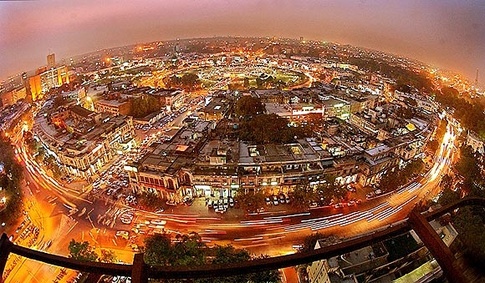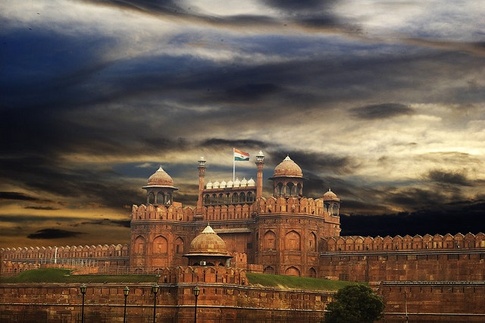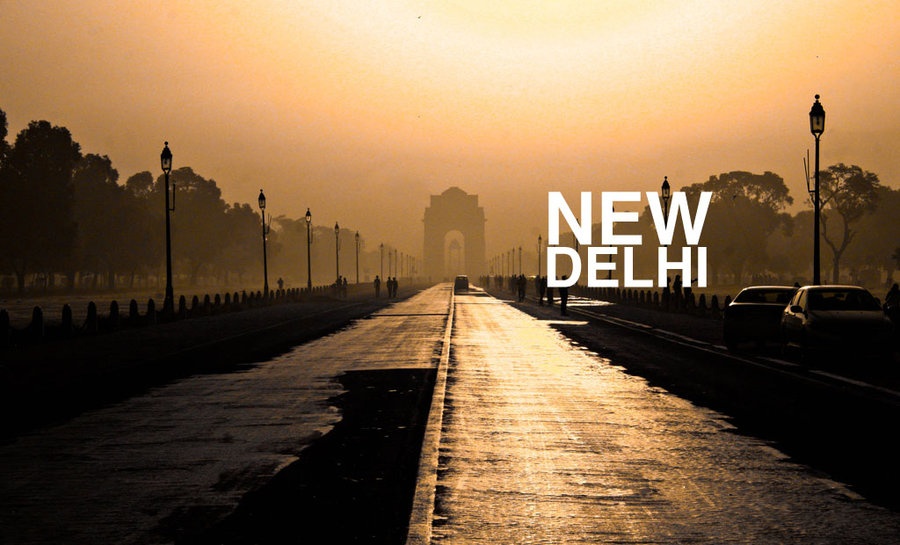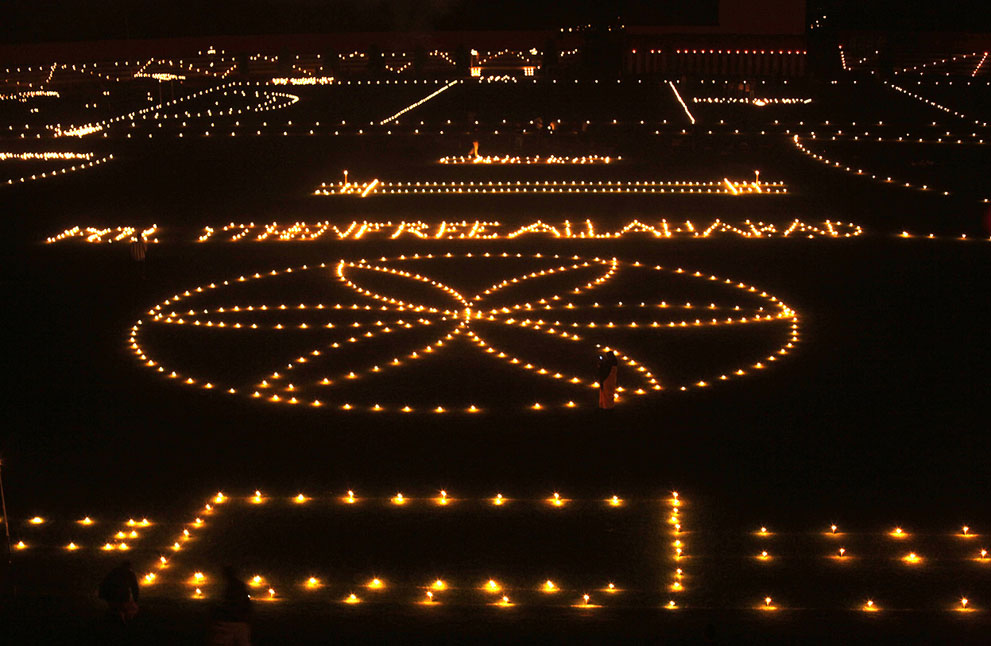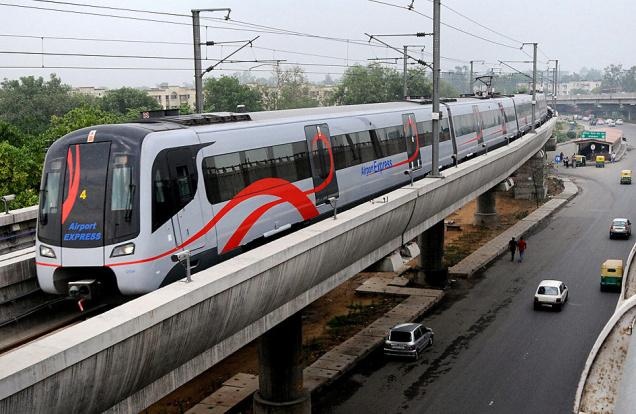Book online or call us 24/7
The Definitive Delhi Travel Guide – Some Fast Facts and Interesting Trivia About New Delhi
It becomes very important to be aware of the place before visiting so as to prevent fraudulent or any sort of inconvenience. You must follow simple and effective Delhi travel tips to ensure a pleasurable stay in case you are visiting Delhi for the very first time.
Fast Facts:
Delhi sprawls over an area of 573 sq miles and provides housing for the 16.75 million of population (according to the 2011 census). In terms of population, Delhi is the 2nd largest metropolitan city in India, after Mumbai. Alternatively, the city is listed as the largest when it comes to the area. The citizens, born and raised, in Delhi are called Delhiites. And, these people are known for their generosity. The postal codes of the areas in Delhi are listed from 110001 to 110098 and the area code is +91 11. Time zone of Delhi is according to the Indian Standard Time (UTC+5.30). Here, people of different ethnicity like Hindi, Punjabi, and Bihari are found.
History:
The history of Delhi takes you back to around 5000 BC when Delhi was known as Indraprastha. In 736 AD, it came to be known as Hastinapur, Lal Kot. Qila Rai Pithora was the name for Delhi in the year 1180 AD and from 1206 AD the place into existence as Delhi.
- Early History: As per the Indian folklore, Indraprastha was the capital of Pandavas in Mahabharata (Indian Epic). This place was one of the five planes namely Baghpat, Pilpat, Panipat and Sonepat. Persian historian, in the 16th century registered a tradition that Raja Dhilu was the founder of Delhi, before the Greek (Yavana) invasions.
- 8th Century to 16th Century: In 736 AD, Tomar dynasty was the one to establish Lal Kot. Later, the Chauhan kings of Ajmer, annexed Lal Kot and remained it as Qila Rai Pithora in 1180. Since 1206, Delhi, under the Slave Dynasty, was declared as the capital of the Delhi Sultanate. Thereafter, following the 1st Battle of Panipat, the erstwhile ruler of Fergana, Zahiruddin Babur, overpowered the last Afghan Lodi Sultan and established the Mughal Dynasty.
- 16th Century to 19th Century: This was the time when Delhi was under the Mughals and was ruled for a longer period. During this era, most of the architectural structures were built that today are regarded as major tourist attractions.
Delhi Top Attractions:-
- Humayun’s Tomb: Situated in proximity to the crossing of Lodhi Road and Mathura Road, Humayun’s Tomb is one of the finest and first specimens of Mughal style of architecture in India. The tomb was built almost after 9 years of the death of Humayun in 1565 A.D., by Bega Begam – his senior widow.
- Red Fort: The 33 m high structure above the clamor of Old Delhi is reminiscent of the magnificent pomp and power of the Mughal Sultanate. The red sandstone walls were built in 1638 to keep the invaders at bay. Lahore Gate is the main gate of the fort. Today, the gate is regarded as the symbolic and emotional focal point and attracts huge crowds on Independence Day every year. Enthralling sound and light show is also organized in evening to re-creates events in history of India, associated with the fort. Some of the attracting attributes are Chatta Chowk, Drum House, the white marble Hall of Private Audiences, the Hall of Public Audiences, the Pearl Mosque, Palace of Color and Royal Baths.
- India Gate: located in the heart of the city, India gate stands 42 m high, an “Arc-de-Triomphe” like archway in the middle of a crossroad. The structure marks the bravery of the 70,000 Indian soldiers, who lost their lives during the World War I. During the night, the architectural structure has a unique charm to showcase. The green lawns surrounding the attraction also make it a popular picnic spot.
- Parliament House: A circular colonnaded building consisting of an open verandah and 144 columns is the Parliament House. The structure features ministerial offices, an excellent library and numerous committee rooms as well. The central hall with oak paneled walls and 3 semi-circular edifices are used for the Lok Shabha and Rajya Shabha meetings.
- Rashtrapati Bhavan: Rashtrapati Bhavan (means Presidential Residence in English) is the official residence of India’s President. The Palace building was formerly known as Viceroy’s House. The attraction features the mansion with 340 rooms, which includes the President’s official residence, guest rooms, halls, and offices. Huge presidential gardens (Mughal Gardens), residences of bodyguards and staff, large open spaces, stables, utilities and other offices are also featured within its perimeter walls.
- Lotus Temple: A beautiful temple, constructed in a shape of white lotus was completed in 1986. Pure white marble is used in the construction and the architect Furiburz Sabha chose the symbol of the lotus, which is common to Hinduism, Jainism, Buddhism, and Islam. Irrespective of any faith, people here are free to visit and meditate or pray. Around the blooming petals, there are nine pools of water adorning the beauty of the temple.
Climate:
The climate of Delhi is chilly in winters and terribly hot during summers. Thus, you will find it to be extreme in nature. During the summers (months between April to July), the day temperature rises above 40°C with little relief in the evening. The winters make the city shiver due to cold wave. These waves are the influences of the disturbances from Himachal Pradesh, Uttaranchal and other hilly states. Winter mornings are very foggy and you may also witness thick smog’s layer. Best time to visit Delhi is from October to March.
Culture:
In Delhi, you will find mixed culture. There is the huge influence of the adjacent states namely Uttar Pradesh, Haryana, Punjab and Rajasthan. Thus, the lifestyle and ideas of the people of this cosmopolitan city are open and very generous. Here, you can witness the celebration of all major festivals like Diwali, Id, Buddha Purnima, Holi, Guru Purab, Christmas, etc., with great pomp and grace.
Transportation:
Reaching Delhi is not at all difficult as the city is well connected with all modes of transportation networks like road, rail and airport. After reaching Delhi, conveyance in the city is also not at all an issue as you will find a personal cab, auto rickshaw, etc., on hire. You may also use the bus services of DTC to commute in the city at a very nominal fair. Apart from all these, the Delhi Metro Rail Service is also available and is well connected to almost every part of the city. The network is also interconnected at various junctions like Rajiv Chowk, Kashmeri Gate, etc. Delhi Metro has made commuting easy and comfortable for the passengers and tourists.
Useful Tips:
- Make sure you do not carry huge cash while travelling in the city.
- The amount that you carry in wallet, do not put your wallet in the rear pocket. Try to keep it in the inner pockets provided in shirts and jackets.
- Carrying plastic money is the safest way to carry money along. Delhi has ATM network of almost all the major banks that you could find in every location.
- Try to keep your handbag clutched under the bend of your elbow or wrap its strap around your wrist. During sitting or dinning at public places, keep your handbag on your lap.
- While your stay in any of the Delhi Hotels, ask the identity of the person knocking at the door before opening the doors.
- Store your passport, jewelry and other valuable items in a safe place of your room in the hotel.
- At railway stations, airports, bus terminals, etc., be very conscious about your belongings and luggage.
- In case of a business appointment, make sure you look into the facts of the company and also know about the person you are supposed to meet. It is also suggested to arrange the meeting at some common place like cafes or restaurants.
- In case of any help, you should approach the May I Help You” counter at Railway Stations and Airports, rather that talking to any individual.
- Be alert of the frauds and pickpockets, while travelling in the city.
- To be on a safer side, it is advisable to travel a “Pre Paid Taxi Service”. These taxis are managed and governed by the Delhi Traffic Police. As this is a prepaid service, advance payment of the fare is to be made according to the luggage and distance to be travelled.
- Always seek help from government cells like DTC, Delhi Tourism, etc., or “May I Help You” counters rather than following the advice of the cab or taxi drivers for travelling and staying options in the city.
- Do not travel alone during night, especially in localities that are sparsely populated.
- Do not mix with strangers and also do not firmly believe on the information provided by them. Delhi PCR Vans are available for your help, or you may also dial 100 from any corner of Delhi to get your complaint registered.
- In case, you are a female, try not to mix with people or shake hands. If possible, avoid wearing capri or minis and try to wear full trousers.
- Provide only 10% of the total bill to the waiters and guides as a token of their service.
- Rs. 50 is the expected tip for the bellboys and gatekeepers for their services.
- Most importantly, make sure, you follow all the rules and regulations to enjoy a bliss experience, while stay in Delhi.
Useful Contact Details For Foreigners:-
Money Exchange:
- State Bank of India, I. G. I. Airport, 24 hours
- Central Bank of India, Ashok Hotel, 24 hours
- Delhi Tourism, N-36 Bombay Life Building, Middle Circle, C.P. New Delhi – 110001 (Monday to Saturday) Timings : 9.30 am to 6.00 pm
For Extension of VISA:
The foreigner’s Regional Registration Office (F.R.R.O.)
Hans Bhawan, Tilak Bridge, New Delhi
Timing : 9.30 am to 1.30 pm; 2.00 pm to 4.00 pm
Railway Assistance:
International Tourist Bureau
(for Train Reservation & Indrail Passes)
1st floor, New Delhi Railway Station Paharganj side
Timing : 9.30 am to 6.00 pm
Permits For Restricted Areas:
Ministry of Home Affairs,
Lok Nayak Bhawan, opp. Khan Market, New Delhi
(Monday to Friday Timing : 10 am to 5 pm)
International & Domestic Air Ticketing:
Delhi Tourism
N-36, Bombay Life Building,
Middle Circle, C.P., New Delhi – 110001
Timing : 9.30 am to 6.00 pm
Prepaid Taxi/Auto:
Available from Domestic & International airport, all Railway Stations and Bus terminals & other important places.
* All listed information is subject to change without prior information. Please keep revisting the website to stay updated with the same.
June 4, 2013 Tuesday at 10:23 am


